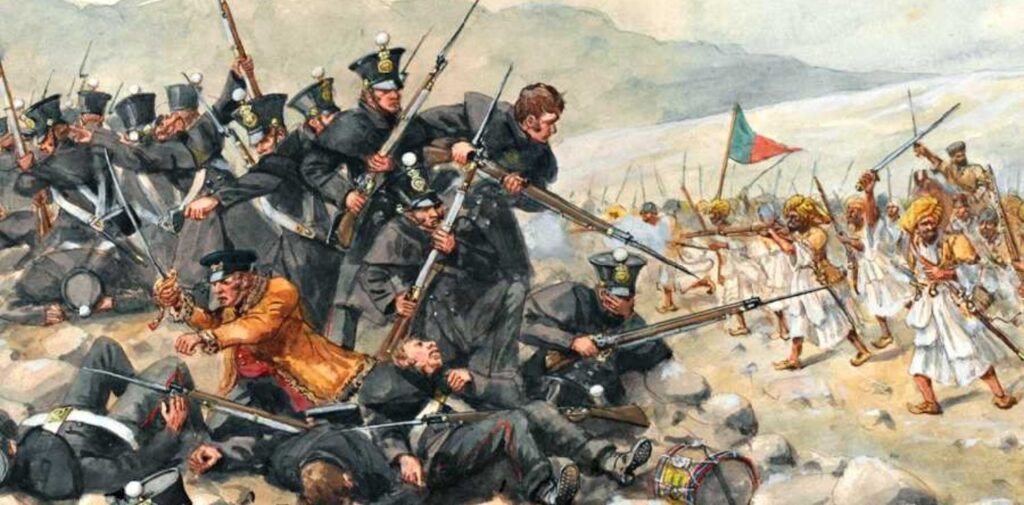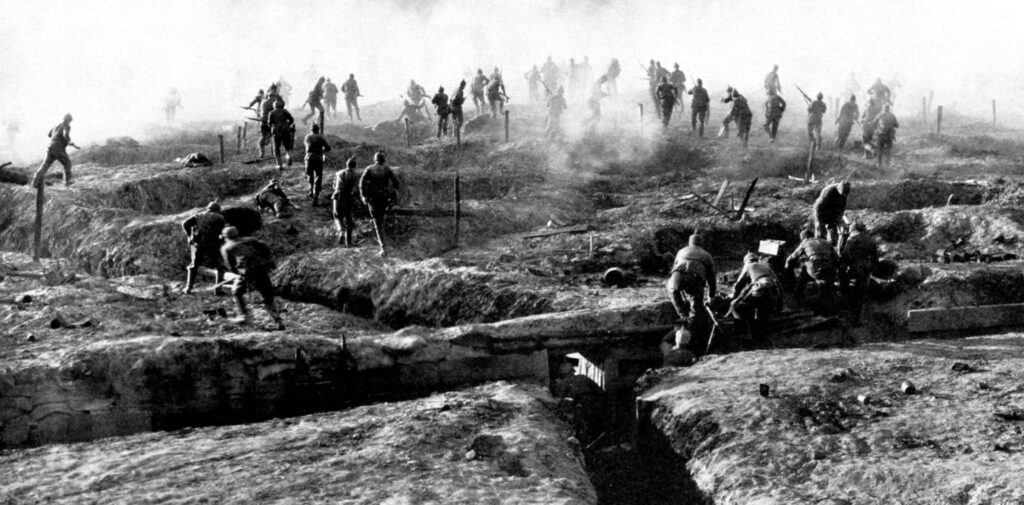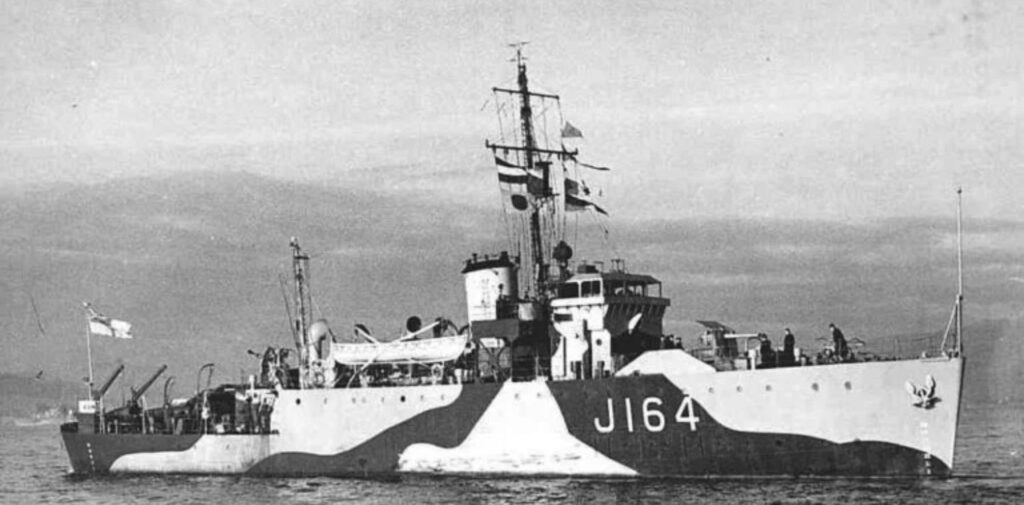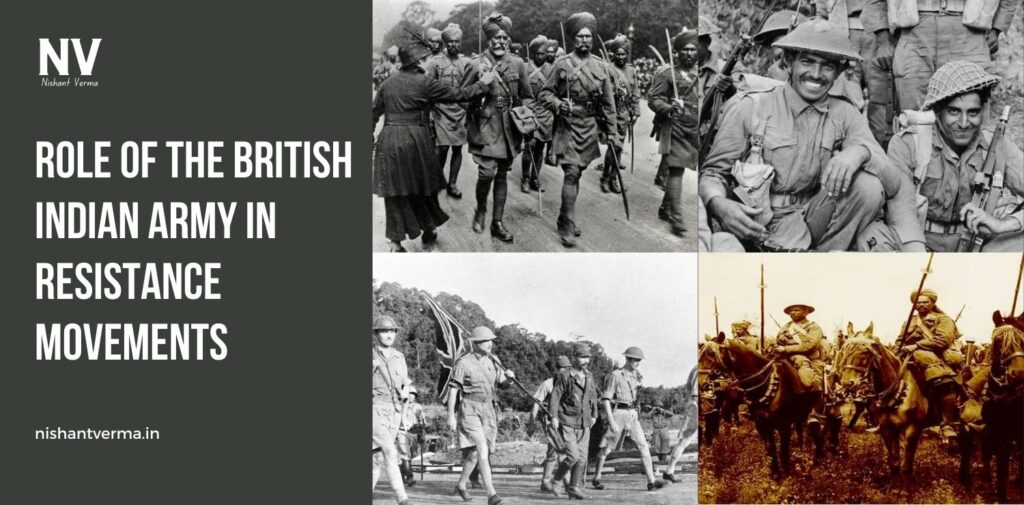The Indian freedom struggle, which spanned over many decades, was not just a battle fought by politicians, leaders, and the common people. The British Indian Army, which was under British colonial control, also played a significant role in the resistance movements that led to India’s independence in 1947.
While the army was primarily an instrument of British power and authority, there were several instances when members of the British Indian Army turned against British colonial rule, either through rebellion or by supporting the Indian independence movement. This article explores the role of the British Indian Army in the resistance movements, focusing on key events such as the First War of Independence (1857), World War I, World War II, and the Quit India Movement.
British Indian Army and its Origins
The British Indian Army was created in the 18th century as the British East India Company began to expand its control over India. It was primarily composed of Indian soldiers, called sepoys, led by British officers. Over time, the army grew to become one of the largest in the world, with soldiers from all across India. Despite the British control, many Indian soldiers were recruited due to limited options available to them at that time.
While the army was meant to safeguard British interests in India and abroad, the Indian soldiers, or sepoys, often had to fight for the British against their fellow countrymen, which created deep feelings of resentment. This resentment, combined with economic hardships, social injustices, and racial discrimination, eventually led to significant resistance movements within the army itself.

The First War of Independence (1857): The Spark of Rebellion
The first major act of resistance by Indian soldiers against British rule came in 1857, with the Sepoy Mutiny or the First War of Independence. The rebellion began with a revolt by sepoys stationed in Meerut, but it soon spread across northern India, including Delhi, Kanpur, and Lucknow.
The mutiny was triggered by various grievances, including the introduction of new rifle cartridges that were rumored to be greased with animal fat (offending both Hindu and Muslim soldiers). However, the causes were deeper, rooted in the oppressive policies of the British, economic exploitation, and the disrespect shown to Indian customs and traditions.
Indian soldiers, led by figures like Mangal Pandey and Rani Lakshmibai of Jhansi, rose up against their British officers. The mutiny represented the frustration of Indian soldiers who were forced to fight for the British while enduring poor conditions, low pay, and racial discrimination.
The British ultimately crushed the rebellion, but it was a pivotal moment in India’s history. The event served as an early example of Indian resistance against British rule, and it also sowed the seeds of future resistance movements. The mutiny marked a turning point in the relationship between India and the British and was a precursor to the larger-scale freedom struggle that would follow.
World War I: A Time of Discontent
During World War I (1914-1918), India contributed greatly to the British war effort, sending more than a million soldiers to fight alongside the British in Europe, Africa, and the Middle East. Many Indian soldiers fought bravely in the war, but their contribution went largely unrecognized, and they were often treated as second-class citizens by the British.
The harsh conditions of the war and the heavy casualties suffered by Indian soldiers led to growing dissatisfaction. Many Indian soldiers returned home after the war with a sense of injustice, as they were not given the rewards and recognition they expected for their sacrifices.
The war also heightened the desire for self-rule in India. The Montagu-Chelmsford Reforms (1917) promised limited reforms but did not grant India full self-government, leading to widespread disillusionment. After the war, many soldiers, now experienced in warfare and disillusioned with British promises, began to look for ways to support the independence movement.

The Non-Cooperation Movement (1920-1922)
The Non-Cooperation Movement, led by Mahatma Gandhi, called for Indians to boycott British institutions and goods in peaceful protest. This movement gained widespread support from the masses, but it also had an impact on the British Indian Army.
Gandhi’s call for non-violent resistance was based on the idea that Indian soldiers should refuse to serve in the British army. His message resonated with many soldiers, who were fed up with the oppressive colonial rule. Some soldiers began to withdraw their support for the British Army, and many refused to fight in foreign wars.
While the Non-Cooperation Movement did not result in a widespread rebellion within the army, it showed that a growing number of Indian soldiers were increasingly willing to support the independence struggle. The movement also inspired a new generation of nationalists and soldiers who believed that their loyalty should be to India and not to the British Empire.
World War II and the Quit India Movement
The most significant instance of resistance within the Indian Army came during World War II and the Quit India Movement of 1942. In 1940, India was once again called upon to support the British war effort, but this time, the situation was different. By this time, many Indians had grown increasingly frustrated with the lack of political freedom and the British government’s refusal to grant India self-rule.
The British decision to involve India in World War II without consulting Indian leaders led to widespread discontent. As the war dragged on, the Quit India Movement was launched by Mahatma Gandhi and the Indian National Congress in 1942, calling for an immediate end to British rule. This movement quickly gained momentum, with millions of Indians across the country taking to the streets, demanding independence.
In the face of growing civil disobedience, the British government decided to rely heavily on the Indian army to maintain control. However, the army was divided in its loyalty. Many Indian soldiers began to sympathize with the Quit India Movement and were reluctant to fight for the British. A significant portion of the Indian army was already serving in foreign territories, and their morale was low.

The Royal Indian Navy Mutiny (1946)
A major turning point in the involvement of the British Indian Army in the resistance movement came with the Royal Indian Navy Mutiny in 1946. The mutiny was sparked by dissatisfaction over poor pay, harsh working conditions, and the British government’s treatment of Indian sailors. It began with a protest by sailors in Mumbai (then Bombay), but soon spread to several naval units across India.
The mutiny was a clear sign of the deep resentment within the armed forces. Indian soldiers and sailors, who had been part of the British war effort, began to rise up against British authority. While the mutiny was eventually suppressed, it marked the final stages of British control in India. The British realized that they could no longer rely on the Indian army to maintain order and that independence was the only viable option.
The Legacy of Resistance in the British Indian Army
The role of the Army in the resistance movements was critical in challenging British control over India. Indian soldiers, who had been central to the British Army for years, became increasingly disillusioned with the colonial government and began to support the cause of Indian independence. While the army was primarily used by the British to suppress revolts, there were several moments when soldiers took a stand against British rule, both within and outside the army.
The resistance within the British Indian Army, from the First War of Independence to the naval mutiny of 1946, played an important role in weakening British authority. The eventual independence of India in 1947 was not only the result of political and social movements but also the collective actions of many soldiers, sailors, and civilians who fought against colonial oppression.
Conclusion
The British Indian Army, despite being a tool of colonial control, became a significant part of India’s resistance against British rule. From the Sepoy Mutiny of 1857 to the Quit India Movement and the naval mutiny of 1946, the army witnessed growing discontent and rebellion from Indian soldiers who were once loyal to the British crown. These acts of resistance within the army demonstrated the deep-seated desire for freedom and self-rule that resonated across India.
While the army was used by the British to suppress revolts and maintain order, its role in the larger freedom struggle was crucial. The actions of Indian soldiers, sailors, and civilians helped pave the way for the eventual independence of India in 1947.




